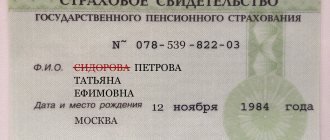A little over five years ago, on June 1, 2021, the Arbitration Procedural Code introduced a mandatory claim procedure for the pre-trial settlement of disputes.
A claim or other pre-trial procedure for resolving a dispute is mandatory in cases provided for by law or agreement (part 5 of article 4 of the APC, paragraph 3 of article 132 of the Code of Civil Procedure, part 3 of article 4 of the CAS).
However, it is not required for all types of cases. For example, if the amount of claims is less than 500 thousand rubles, the debtor acknowledges them, but does not fulfill his obligations, then the creditor has the right to go to court and obtain a court order for collection. For the one who is owed, this is good, but for the debtor, not so much. After all, debt can be controversial.
Quick, without pretense, collection by court order occurs on the basis of the simplest documents available to the creditor, for example, a reconciliation report. For him, everything is quite easy: he submitted a document to the court, received an order, and presented it to the bailiffs. Bailiffs, in the manner of enforcement proceedings, send an order to the debtor, if he does not voluntarily repay the debt, it is collected from the current account or at the expense of other property.
At the same time, the debtor faces other problems - the presence of such disputes in the file of arbitration cases (and from there in various services for checking counterparties) can negatively affect the business reputation of the company.
At the same time, the lender also has difficulties . A court order may be challenged by the debtor within 10 days from the date of receipt without submitting additional documents or other evidence.
SberResolution lawyers will provide legal services for debt collection. We will draw up a claim, represent your interests in court, and you can also use the subscriber support service.
As a result, the dispute leads to ordinary legal proceedings, which can last several months with all authorities. You can forget about good relations between these counterparties. So maybe we shouldn’t bring it to this?
It is beneficial for both parties to the transaction to have a clear procedure in place in case of a dispute. If it is followed, the interests of each party will be protected.
How to include a mandatory claim procedure in a contract
In most contracts you can find the following wording, the presence of which is passed off as a prescribed claim procedure:
- “All disputes arising from this agreement or in connection with it are resolved by the parties through negotiations. If the parties cannot reach a mutual agreement, disputes and disagreements are resolved in court at the request of one of the parties.”
- “All disputes between the Parties are resolved in a pre-trial (claims) manner. The claim must be considered by the party receiving it within 30 days from the date of its receipt. If the Parties cannot reach a mutual agreement, disputes and disagreements are resolved in court at the request of one of the parties.”
These formulations, as a rule, are not recognized by the courts as a claim procedure. Mandatory elements of the claim procedure must include:
- Condition for filing a claim before going to court.
- Form and procedure for submitting a claim: agreed address or email, other acceptable form - for example, through a website or instant messenger.
- The period for consideration of a claim, after which a party has the right to go to court and the moment from which it is counted: from the date the claim is sent or from the moment the claim is received.
In addition, the parties may agree in advance:
- list of documents attached to the claim, who can sign them, format;
- cases when the claim will be considered not received;
- the procedure for sending a response to a claim, the obligation to respond to it (or lack thereof), what the response to the claim should contain;
- the rights of the parties to provide additional documentation and information, the possibility of suspending the deadline for consideration of a claim and the conditions for submitting a dispute to court.
Protection of interests in court
The first question you may have is which court to go to? There are three options:
- world;
- district;
- arbitration
It’s not difficult to choose the right one - they clearly delineated their powers among themselves. Arbitration courts resolve economic disputes between individual entrepreneurs and LLCs. If one of the parties is an individual, magistrates or district judges take over the case. The difference between them is the cost of the claim. Disputes costing up to 50,000 rubles are considered by magistrate courts, more expensive ones by district courts.
The next step is to determine the coordinates of the court. It depends on the defendant's address. Therefore, if you are in different cities, you will have to resolve the dispute on foreign territory.
Life hack for the prudent: if the counterparty is located on the other side of the country, you can determine jurisdiction by agreement - choose which court will hear the dispute.
Preparation of documents
Now comes the most serious stage - preparing the claim and documents. A statement of claim is similar to a claim: it needs to describe the controversial situation in detail, but without unnecessary “water,” name the requirements and support them with the norms of the law. You can find out details about the form and content of the statement of claim from Art. 131 of the Civil Procedure Code and Art. 125 of the Arbitration Procedure Code.
Pay special attention to the wording of the requirements; the outcome of the case largely depends on this. The judges will not “think things out” and will only consider what is stated in the claim.
Attach evidence to the statement of claim - any documents confirming your position: contracts, invoices, acts, invoices and others. To this list, add a mail receipt, a list of the attachments, and a notice of receipt of the claim.
Don't forget to pay the state fee. Without a receipt for payment, the case will not be processed. The amount of the fee depends on the value of the claim, and you can calculate it using the calculator on the court’s website.
Submission of documents
The package of documents, including the statement of claim, must be submitted to the court in at least two copies. The judge needs one, and the rest will be sent to the defendant. Accordingly, if there are two defendants, prepare three copies. Yes, printing documents can take a whole stack of paper.
You can send documents to the court by mail, bring them in person or through a representative by proxy. If you decide to send documents by mail, be prepared that the process will drag on for another couple of weeks. For a personal visit, prepare another copy of the statement of claim - it will be stamped at the court reception desk indicating receipt of the documents.
Special requirements of arbitration courts
It is more difficult to prepare for a visit to the arbitration court and you will have to collect a little more documents. In addition to those already mentioned, you will need:
- extracts from the Unified State Register of Legal Entities/Unified State Register of Individual Entrepreneurs for you and the counterparty. The extract needs to be “fresh”, received no earlier than 30 days before filing the claim.
- certificate of state registration of your individual entrepreneur or LLC.
In addition, you yourself send a package of documents to the defendant. Unlike other courts, the arbitration court will not deal with this. Therefore, before taking documents to court, send a similar package to the defendant in a valuable letter with an inventory and notification. You will add the receipt and inventory to the general list of documents for the court.











